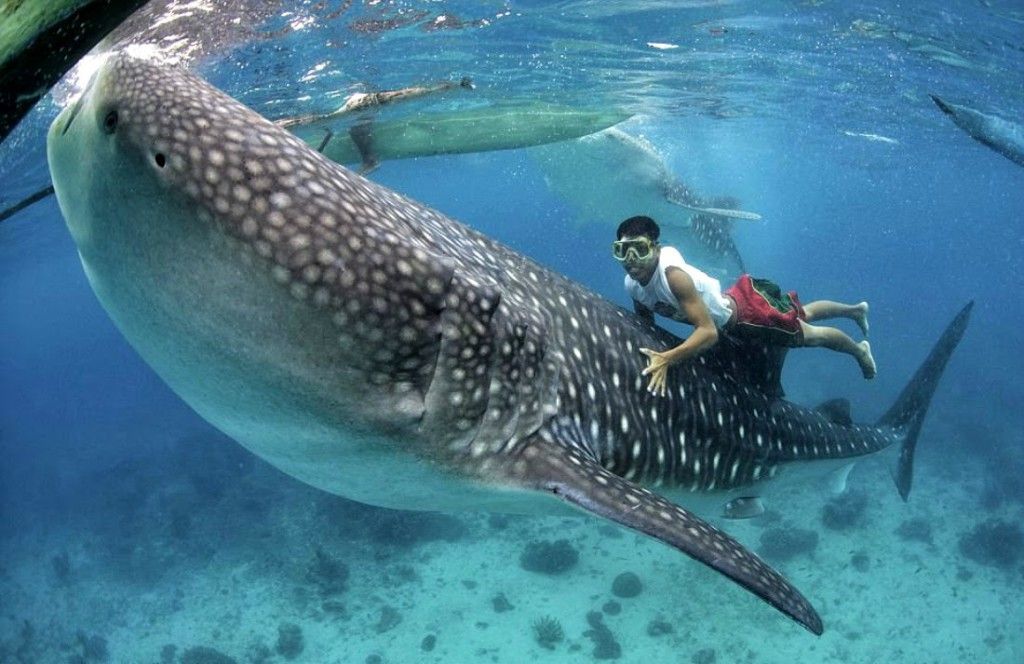Swimming with whale sharks is a breathtaking experience, offering a rare opportunity to encounter one of the ocean’s most majestic creatures up close. These gentle giants, known for their enormous size and distinctive patterns, captivate the imagination of marine enthusiasts worldwide. However, swimming with whale sharks requires careful planning and adherence to safety guidelines to ensure a safe and respectful interaction for both the swimmer and the whale shark. Here are essential tips and advice for a safe and unforgettable encounter with these magnificent creatures.
Understanding Whale Sharks
Before diving into the safety tips, it’s important to understand a bit about Swimming With Whale Sharks. Despite their name, whale sharks are not whales but the largest species of fish in the world. They can grow up to 40 feet in length and weigh as much as 20.6 tons. These filter feeders primarily consume plankton and small fish, posing no threat to humans. Whale sharks are typically found in tropical and warm-temperate waters, with popular destinations for swimming with them including Mexico’s Yucatán Peninsula, the Philippines, and Australia’s Ningaloo Reef.
Choosing a Responsible Tour Operator
The first step in ensuring a safe and respectful encounter with whale sharks is to choose a reputable tour operator. Look for operators that follow established guidelines and regulations for interacting with whale sharks. They should provide thorough briefings on safety protocols and ensure that the number of swimmers is limited to prevent overcrowding and stress on the animals. Research online reviews and ask for recommendations to find operators known for their responsible practices.
Preparing for the Swim
Proper preparation is key to a safe and enjoyable swim with whale sharks. Ensure you have the right gear, including a mask, snorkel, and fins. Wearing a wetsuit can help with buoyancy and protect your skin from the sun. It’s also important to be physically prepared; swimming in open water can be challenging, so having a good level of fitness will enhance your experience.
Understanding and Following Guidelines
Tour operators provide specific guidelines to follow during the swim, which are crucial for your safety and the well-being of the whale sharks. Here are some standard guidelines:
- Maintain a Safe Distance: Always keep a minimum distance of 10 feet from the whale sharks. This helps to avoid disturbing or startling them.
- Do Not Touch: Never attempt to touch a whale shark. Their skin is delicate, and touching can cause stress or injury.
- Stay Calm and Move Slowly: Quick movements can startle whale sharks. Swim calmly and avoid splashing.
- Stay Out of Their Path: Whale sharks are large and powerful; inadvertently blocking their path can be dangerous. Always position yourself to the side of the whale shark, never directly in front of or behind them.
- Limit Flash Photography: If taking photos, avoid using flash as it can disturb the whale sharks.
Respecting the Environment
Respect for the marine environment is paramount when swimming with whale sharks. Avoid using sunscreen that contains harmful chemicals; instead, use reef-safe sunscreen to protect marine life. Do not leave any trash behind and be mindful of the fragile ecosystem you are entering.
Being Mindful of Your Impac
Whale shark tourism can have significant impacts on local ecosystems and the animals themselves. Being mindful of your presence and the potential stress you may cause is essential. Support conservation efforts by choosing operators that contribute to whale shark research and protection programs. Additionally, educating yourself about whale sharks and their environment can help you become a more responsible participant in this unique activity.
Safety First
Your safety is as important as the well-being of the whale sharks. Always follow the instructions of your guide and never venture too far from the group. Be aware of the conditions of the water, such as currents and waves, which can change rapidly. If you feel uncomfortable or unsafe at any point, signal to your guide and seek assistance.
Post-Swim Considerations
After swimming with whale sharks, reflect on your experience and consider how you can contribute to the preservation of these magnificent creatures. Share your knowledge and experience with others to raise awareness about the importance of protecting whale sharks and their habitats. Your positive experience can inspire others to engage in responsible and sustainable wildlife tourism.
Conclusion
Swimming with whale sharks is an extraordinary experience that offers a glimpse into the wonders of the ocean. By following these essential tips and advice, you can ensure a safe, respectful, and unforgettable encounter. Remember to choose responsible tour operators, prepare adequately, adhere to guidelines, respect the environment, and prioritize safety. With these measures, you will not only enjoy a remarkable adventure but also contribute to the preservation of whale sharks for future generations to appreciate.
Engaging with nature in a responsible manner enriches our lives and fosters a deeper connection to the world around us. The majestic whale shark, with its gentle presence and awe-inspiring size, reminds us of the beauty and fragility of marine ecosystems. By swimming with whale sharks responsibly, we honor these incredible creatures and the oceans they inhabit.
Click here for more info: Turtle Eggs Hatching
